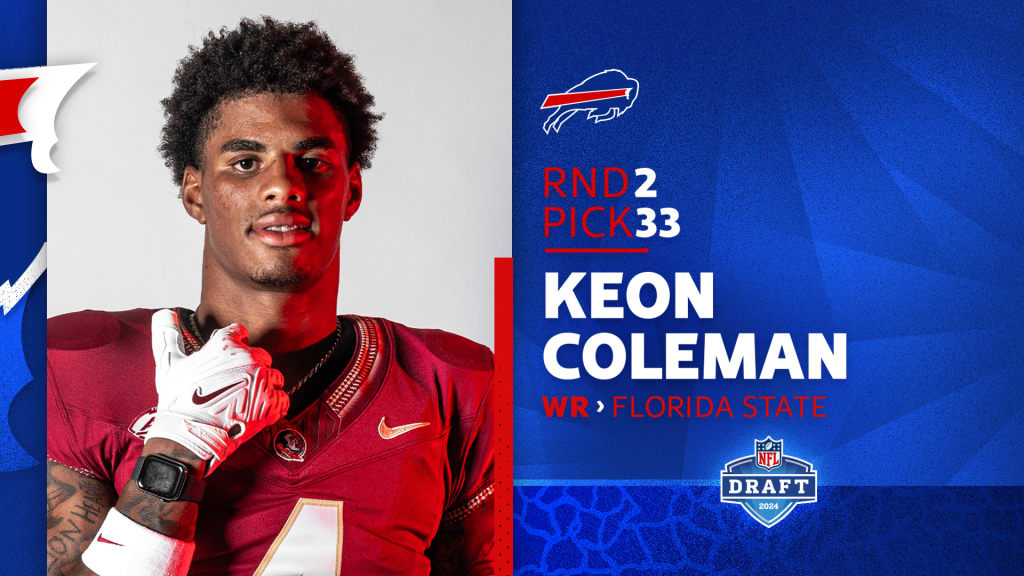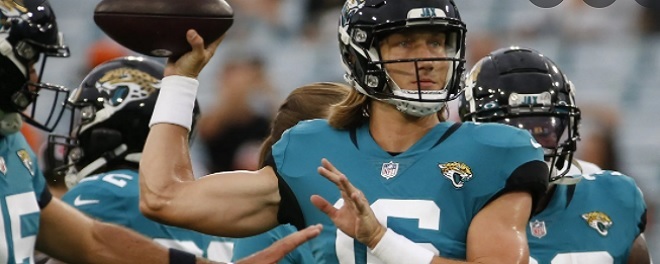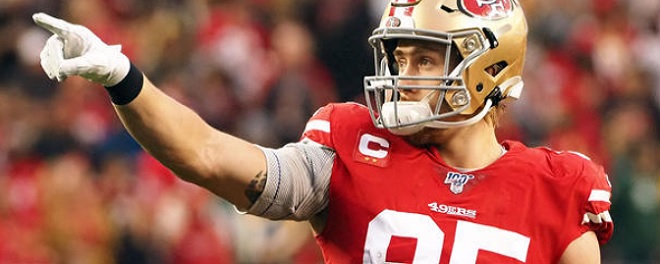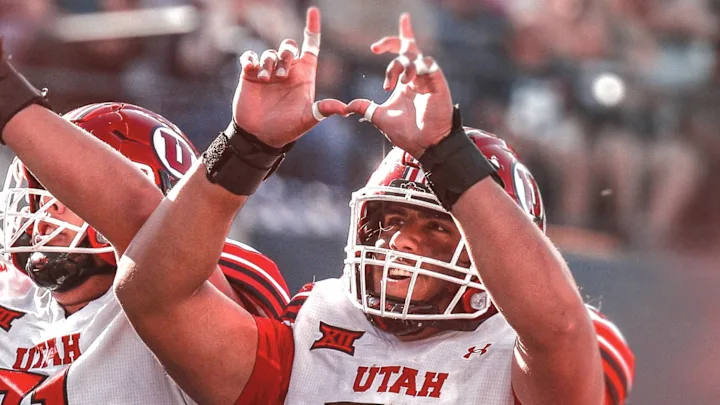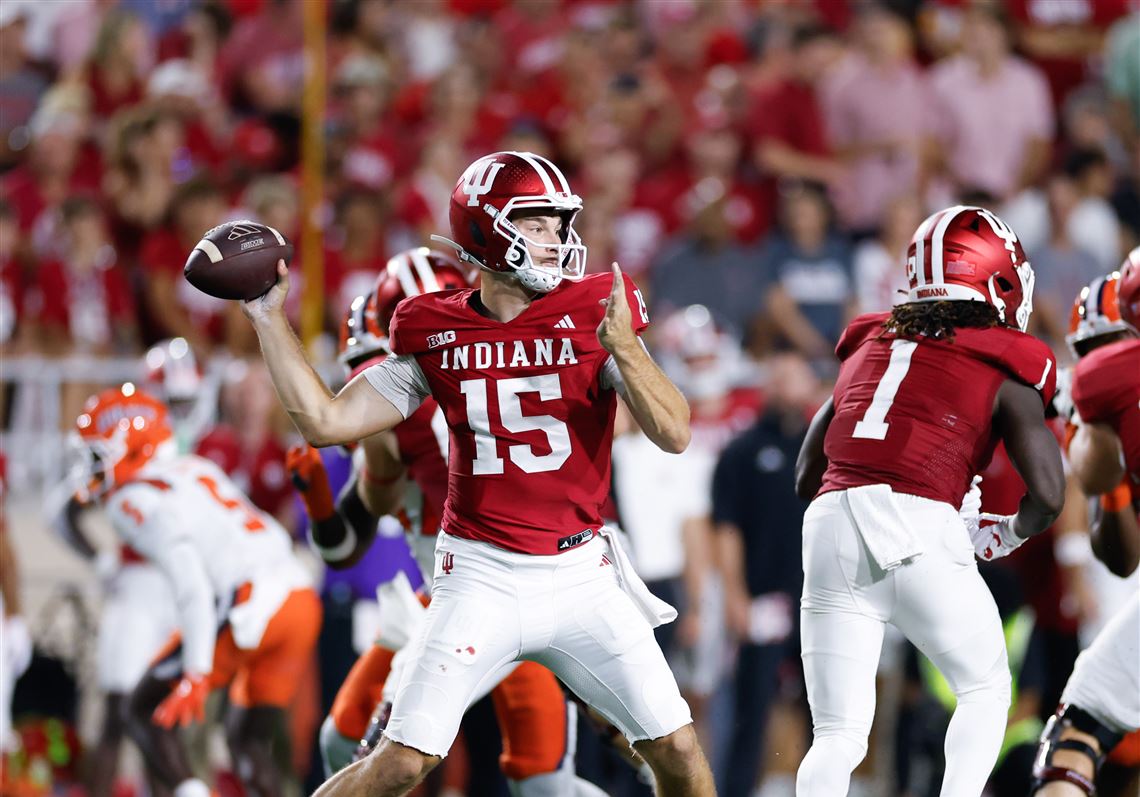Solid Starter
 Cole Bishop, S, Utah – Round 2
Cole Bishop, S, Utah – Round 2 
For many years the Bills had an effective safety tandem with Micah Hyde and Jordan Poyer, but the position has been revamped this offseason. Taylor Rapp was signed in free agency, and Buffalo used their second-round pick to find their other long-term starter with Bishop. After a productive career with the Utes, Bishop could be a plug-and-play competitor in Buffalo.
In pass coverage, the 6-foot-2, 206-pound Bishop is not a man coverage safety to line up against slot receivers all of the time or be a deep free safety, however, he finds ways to factor in coverage. Bishop is a good zone coverage safety in the middle of the field who does a fantastic job of reading the quarterback’s eyes to get in position to create turnovers. With good instincts and anticipation, Bishop seems a step ahead and does a fabulous job of impacting the ball. He shows advanced recognition of routes and offenses going to repeat some of the same routes. In pass coverage, Bishop is not a man coverage safety to line up against slot receivers all of the time or be a deep free safety, however, he finds ways to factor in coverage.
Bishop is a hard hitter who will get physical and stick receivers or running backs with some violence. In the middle of the field Bishop will make ball carriers pay and he has a real physical presence. That leads to him being a good run defender. Bishop will come downhill and make tackles on backs with definite ability to be the eighth man in the box. With his strength and physicality, Bishop is a reliable tackler who shows a nice technique to get low and wrap up while also delivering some force.
Once Bishop adjusts to NFL offenses and receivers while mastering his playbook, he should become a starter for Buffalo. Bishop’s limitations might keep him from being an elite coverage safety in the NFL, but he looks like a safe pick to be a solid starter during his pro career.
2023: O’Cyrus Torrence, G
2022: James Cook, RB
2021: Spencer Brown, OT
2020: A.J. Epenesa, DE
2019: Cody Ford, OT
2018: Harrison Phillips, DT
2017: Dion Dawkins, OT/G
2016: Reggie Ragland, LB
2015: John Miller, G
2014: Cyrus Kouandjio, OT
2013: Robert Woods, WR
Most Likely To Bust
 DeWayne Carter, DT, Duke – Round 3
DeWayne Carter, DT, Duke – Round 3 
This was a difficult selection because I liked Carter as a prospect. I felt the Bills had a very good 2024 draft and Carter was a solid selection in the third round. However, Carter had some struggles at the Senior Bowl and his size seemed to be problematic while taking on better competition. The 6-foot-2, 302-pounder lacks length and is undersized in the middle of the line. Third-round picks are expected to be backups that develop into starters and the size issues might prevent Carter from hitting those growth marks. He might top out as a solid rotational backup for Buffalo.
2023: Dorian Williams, LB
2022: Terrel Bernard, LB
2021: Gregory Rousseau, DE
2020: Gabriel Davis, WR
2019: Dawson Knox, TE
2018: Josh Allen, QB
2017: Tre’Davious White, CB
2016: Cardale Jones, QB
2015: Karlos Williams, RB
2014: Ross Cockrell, CB
2013: E.J. Manuel, QB
Potential Boom Pick
 Keon Coleman, WR, Florida State – Round 2
Keon Coleman, WR, Florida State – Round 2 
There were teams picking late in the first round that had Coleman in the mix to be their pick, so I don’t fault the Bills for moving down and selecting Coleman. Coleman slid later in the draft process because of a slow 4.60 time in the 40-yard dash at the NFL Scouting Combine, but there have been other excellent NFL wide receivers that had slow 40s. Anquan Boldin is one and Coleman has a similar playing style to Boldin. Detroit Lions superstar receiver Amon-Ra St. Brown had a slow 40 that was just slightly better than Coleman, but that time is irrelevant as St. Brown is one of the best receivers in the league. Thus, I think Coleman could definitely become a boom pick for Buffalo despite the 40.
What sets Coleman (6-4, 215) apart is what he can do as a possessional receiver. Coleman is a dangerous receiver who is not a burner with rare speed, but he makes up for it with polish and physicality. With good route-running and strong, reliable hands, Coleman is a chain mover who can do the dirty work in the short to intermediate part of the field.
Coleman is dangerous with the ball in his hands. He uses his well-built frame to break tackles and is very difficult for a lot of defensive backs to get on the ground. His strength to run through their hands makes it difficult for them to get a hold of him. While he isn’t super elusive and is more straight line, Coleman does have the feet to dodge some tacklers in the open field. He is a very good athlete for a big receiver and that could be seen with him impressing as an emergency punt return for the Seminoles in 2023. For the NFL, Coleman has serious yards after the catch potential and he could be a great fit in a West Coast offense.
With his height, strength, and ability to catch the ball in traffic, Coleman is an excellent weapon in the red zone. Coleman tracks the ball well while using late hands to make the reception. Consistently, Coleman uses his big frame to shield defenders from the ball and present a good target for his quarterback. He also uses his height, length, and leaping ability to regularly make catches over defensive backs. As a result, he is difficult to cover with his ability to win 50-50 passes.
As a pro, Coleman is going to have to win on contested catches regularly because he won’t be a receiver that generates a huge amount of separation from man coverage taking on NFL cornerbacks. But he has shown the ability to win 50-50 passes and outfight defensive backs using his thick frame and strength to get the better of them. Coleman is not a burner that is a speed demon, but he has a little burst out of the break and a second gear in the open field.
After Stefon Diggs was traded to Houston and Gabe Davis signed with Jacksonville, Coleman should emerge as the No. 1 receiver for the Bills quickly in his pro career. I think he has definite boom-pick potential for Buffalo.
2023: Dalton Kincaid, TE
2022: Kaiir Elam, CB
2021: Carlos Basham, DE
2020: Zack Moss, RB
2019: Ed Oliver, DT
2018: Tremaine Edmunds, LB
2017: Zay Jones, WR
2016: Adolphus Washington, DT
2015: Ronald Darby, CB
2014: Sammy Watkins, WR
2013: Marquise Goodwin, WR
Future Depth Player
 Sedrick Van Pran-Granger, C, Georgia – Round 5
Sedrick Van Pran-Granger, C, Georgia – Round 5 
The Bills have their starting interior to their offensive line in place, so Van Pran-Granger will compete for a backup roster spot. However, other teams thought that Van Pran-Granger had starting potential for the NFL. He did a nice job at Georgia last season helping to open rushing lanes while being reliable in pass protection. At the very least, Van Pran-Granger should be a solid backup center during his pro career and he might develop into being a starter.
2023: Nick Broeker, G/C
2022: Khalil Shakir, WR
2021: Marquez Stevenson, WR
2020: Jake Fromm, QB
2019: Jaquan Johnson, S
2018: Siran Neal, S
2017: Nathan Peterman, QB
2016: Jonathan Williams, RB
2015: Nick O’Leary, TE
2014: Seantrel Henderson, OT
2013: Duke Williams, S

